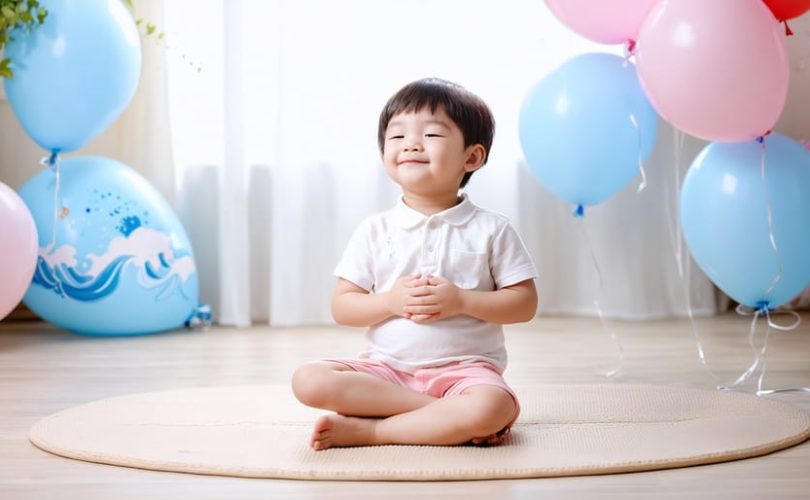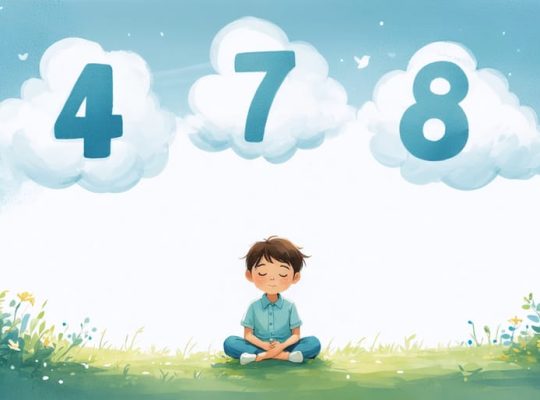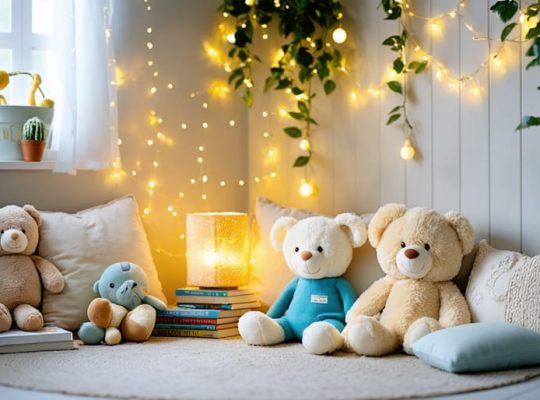Imagine teaching your child to pause and take a deep breath during a meltdown – that’s the transformative power of mindful breathing. This simple yet profound practice helps children (and adults) shift from stress to calm in moments, making it an essential tool for emotional regulation and mental well-being.
Mindful breathing is the practice of intentionally focusing on your breath while observing thoughts and feelings without judgment. Unlike regular breathing, it combines gentle awareness with calming breathing techniques to create a powerful connection between mind and body.
Think of mindful breathing as your child’s emotional anchor – a safe harbor they can return to whenever big feelings become overwhelming. Whether it’s pre-test jitters, bedtime restlessness, or playground conflicts, this natural, always-available tool helps children develop emotional resilience and self-regulation skills that last a lifetime.
As parents and caregivers, understanding mindful breathing isn’t just about learning another parenting technique – it’s about giving our children a fundamental life skill that promotes mental health, reduces anxiety, and builds emotional intelligence. Let’s explore how this simple practice can transform your family’s approach to stress management and emotional well-being.
What Makes Mindful Breathing Special for Kids?
The Science Behind Breathing and Emotions
Have you ever noticed how your breathing changes when you feel different emotions? When we’re calm, our breath is slow and steady, like gentle waves on a beach. But when we’re scared or angry, it becomes quick and shallow, like a butterfly fluttering rapidly.
This happens because our breath and emotions are closely connected through something called the autonomic nervous system. Think of it as a special messenger system in our body that helps us feel calm or excited. When we breathe slowly and deeply, it sends a message to our brain saying, “Everything is okay!” This helps our body relax, our heart rate slow down, and our muscles become less tense.
The amazing thing is that we can use this connection to help us feel better. By changing how we breathe, we can actually change how we feel! When we practice mindful breathing, we’re like scientists conducting a peaceful experiment with our own bodies. We can observe how different types of breathing make us feel different emotions, and use this knowledge to help ourselves feel calmer and happier whenever we need to.
When Mindful Breathing Helps Most
Mindful breathing becomes particularly helpful during moments of heightened emotions or challenging situations in a child’s daily life. When children feel overwhelmed before a test, frustrated with homework, or anxious about meeting new people, taking a few mindful breaths can help them regain their composure.
Parents often notice that bedtime is an excellent opportunity for mindful breathing, as it helps children transition from active play to restful sleep. Similarly, after an argument with siblings or friends, guided breathing exercises can help children calm down and process their feelings more effectively.
The technique proves especially valuable during major life changes, such as starting a new school year, moving homes, or adjusting to family changes. Many teachers report that incorporating brief breathing breaks before important activities helps students maintain focus and reduce test anxiety.
Physical discomfort, like minor injuries or illness, is another instance where mindful breathing can provide relief. Children can use these skills during medical appointments or when feeling under the weather to manage their anxiety and physical responses better.
Remember that consistency in practice during calm moments makes it easier for children to use these skills when they need them most.
Making Mindful Breathing Fun and Easy
Balloon Belly Breathing
Balloon belly breathing is a playful and engaging way to help children understand and practice mindful breathing. Ask your child to lie down comfortably and place their favorite stuffed animal on their belly. Tell them to imagine their tummy is a balloon that slowly fills with air and gently lifts their toy friend up, then deflates to lower it back down.
This visualization technique makes breathing exercises fun and tangible for young children. It helps them focus on the physical sensation of breathing while creating a peaceful moment they can enjoy. Like the 4-7-8 breathing method, balloon belly breathing can be particularly helpful during times of stress or before bedtime.
Encourage your child to notice how their belly rises and falls with each breath, just like a gentle wave. You can make it more interactive by asking them to describe what they feel or by breathing along with them. This shared experience creates a special bonding moment while teaching an invaluable self-regulation skill they can use throughout their life.
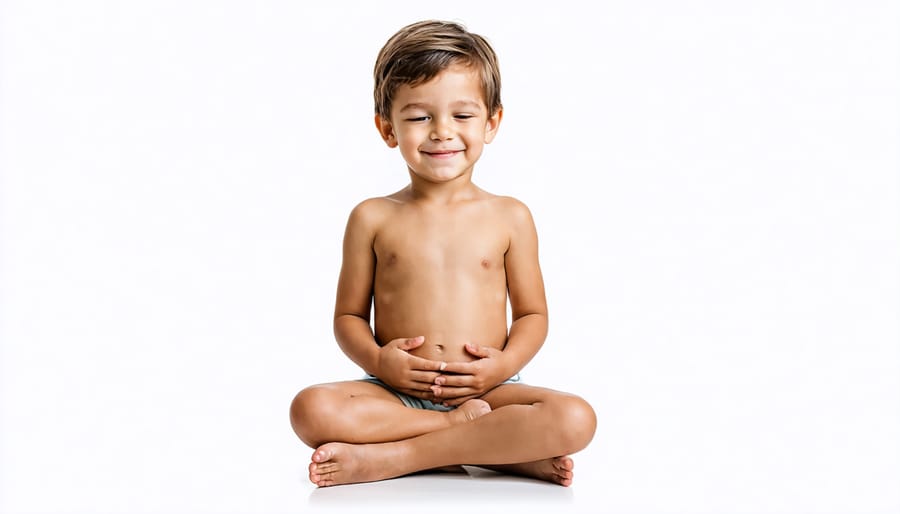
The Five-Finger Breathing Game
The Five-Finger Breathing Game transforms mindful breathing into a fun, visual activity that children naturally enjoy. Here’s how to play: Have your child stretch out one hand, fingers spread wide. Using the index finger of their other hand, they’ll trace the outline of their stretched hand, starting at the bottom of their thumb.
As they trace up their thumb, they breathe in slowly. When tracing down the other side, they breathe out. They continue this pattern – breathing in while tracing up each finger, and out while tracing down – until they’ve traced their entire hand.
Many children find this technique especially helpful because it combines touch, sight, and breath, making it easier to focus. One parent shared, “My 6-year-old calls it her ‘magic calm-down hand’ and uses it before tests or when feeling nervous.”
For younger children, you can make it more engaging by pretending each finger is a birthday candle they’re blowing out, or having them trace your hand while you trace theirs. This creates a beautiful connecting moment while teaching an important coping skill.
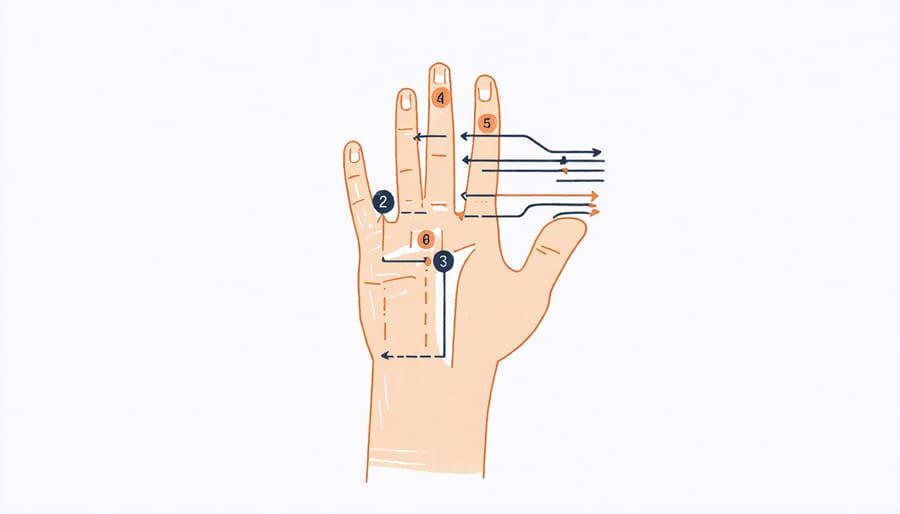
Animal Breathing Adventures
Make breathing practice more engaging by turning it into a fun animal-themed adventure! Children love pretending to be different creatures, and combining this with mindful storytelling exercises can create magical moments of calm. Try breathing like a lion with a big belly breath and gentle roar, or like a snake with long, slow hisses. Encourage children to waddle and breathe like a penguin in cold air, or flutter and float like a butterfly taking gentle sips of nectar. These playful exercises help children connect with their breath naturally while having fun. You can even create simple stories about each animal’s breathing journey, making the practice more memorable and enjoyable for little ones.
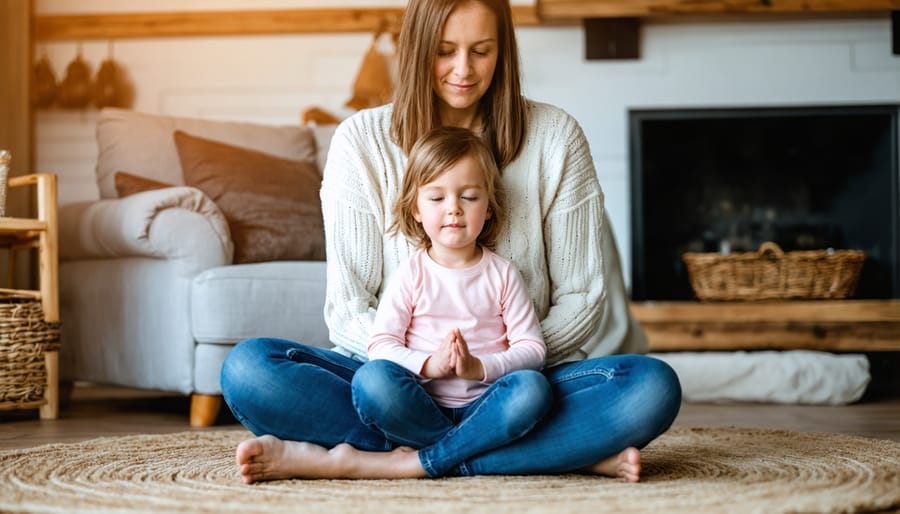
Supporting Your Child’s Practice
Supporting your child’s mindful breathing practice requires patience, consistency, and a playful approach. Start by creating a calm, dedicated space where your child feels comfortable practicing. This could be a cozy corner with cushions or a quiet spot in their bedroom.
Make mindful breathing a regular part of your daily routine – perhaps before bedtime or after school. Children thrive on routine, and establishing a consistent practice time helps form healthy habits. Remember to practice alongside your child, as they learn best through modeling.
Keep sessions short and age-appropriate. For younger children, 1-2 minutes is plenty, while older children might gradually work up to 5-10 minutes. Use gentle reminders and positive reinforcement rather than pressure or criticism.
Incorporate fun elements to maintain engagement. Use props like stuffed animals that rise and fall with belly breathing, or imagine blowing bubbles or floating clouds. Create simple games like pretending to be different animals with different breathing patterns.
Watch for signs that your child is becoming frustrated or restless. It’s perfectly okay to take breaks or try again later. Celebrate small successes and acknowledge their efforts rather than focusing on “perfect” technique.
If your child seems resistant, don’t force it. Instead, try introducing mindful breathing during natural moments, like when they’re feeling excited, worried, or need to calm down. This helps them understand how breathing can be a practical tool for managing emotions.
Remember that every child is different – what works for one might not work for another. Stay flexible and willing to adapt your approach based on your child’s needs and responses.
Mindful breathing is a powerful tool that can help your child develop emotional awareness, reduce stress, and build lifelong coping skills. By starting with simple, playful exercises and gradually building a consistent practice, you can help your child discover the calming benefits of conscious breathing. Remember that every child learns differently, so be patient and stay positive as you explore these techniques together. Whether it’s pretending to be a floating cloud or using the balloon breath exercise, make the experience enjoyable and pressure-free. As your child becomes more comfortable with mindful breathing, you’ll likely notice improvements in their ability to manage strong emotions and stay focused. Why not start today? Take a deep breath together and begin this wonderful journey of discovery with your child. Your presence and support in this practice can make all the difference in helping them develop these valuable life skills.

